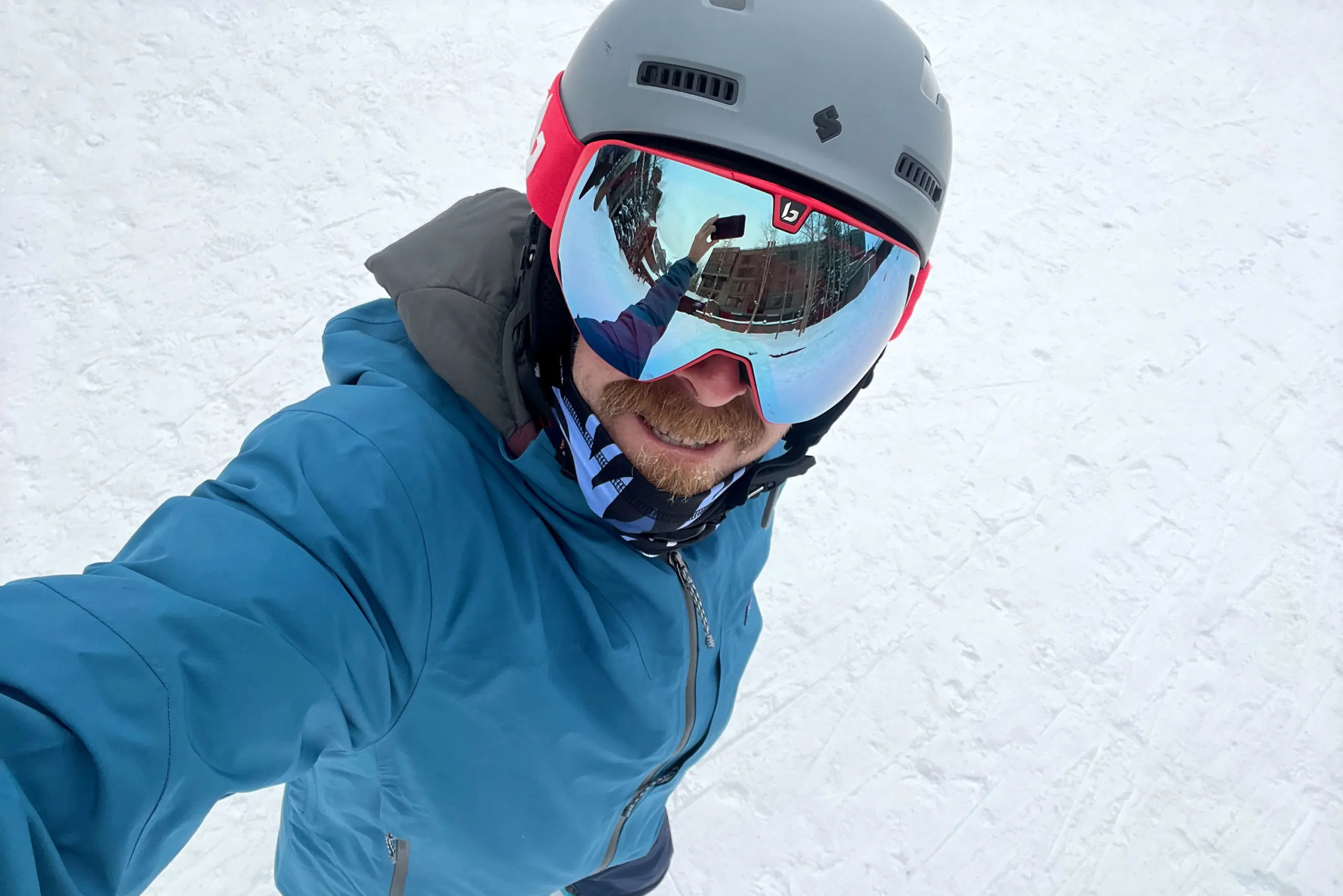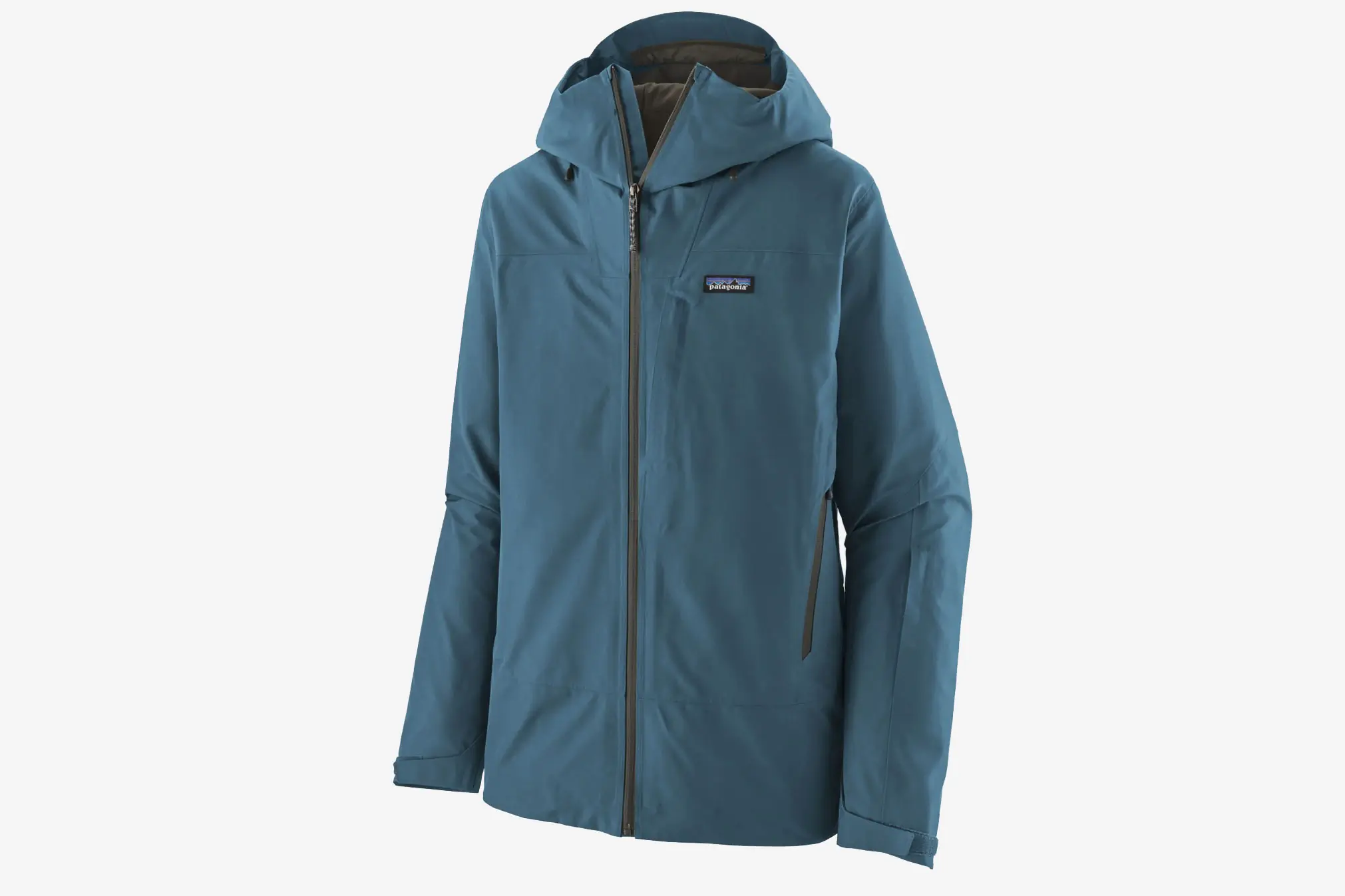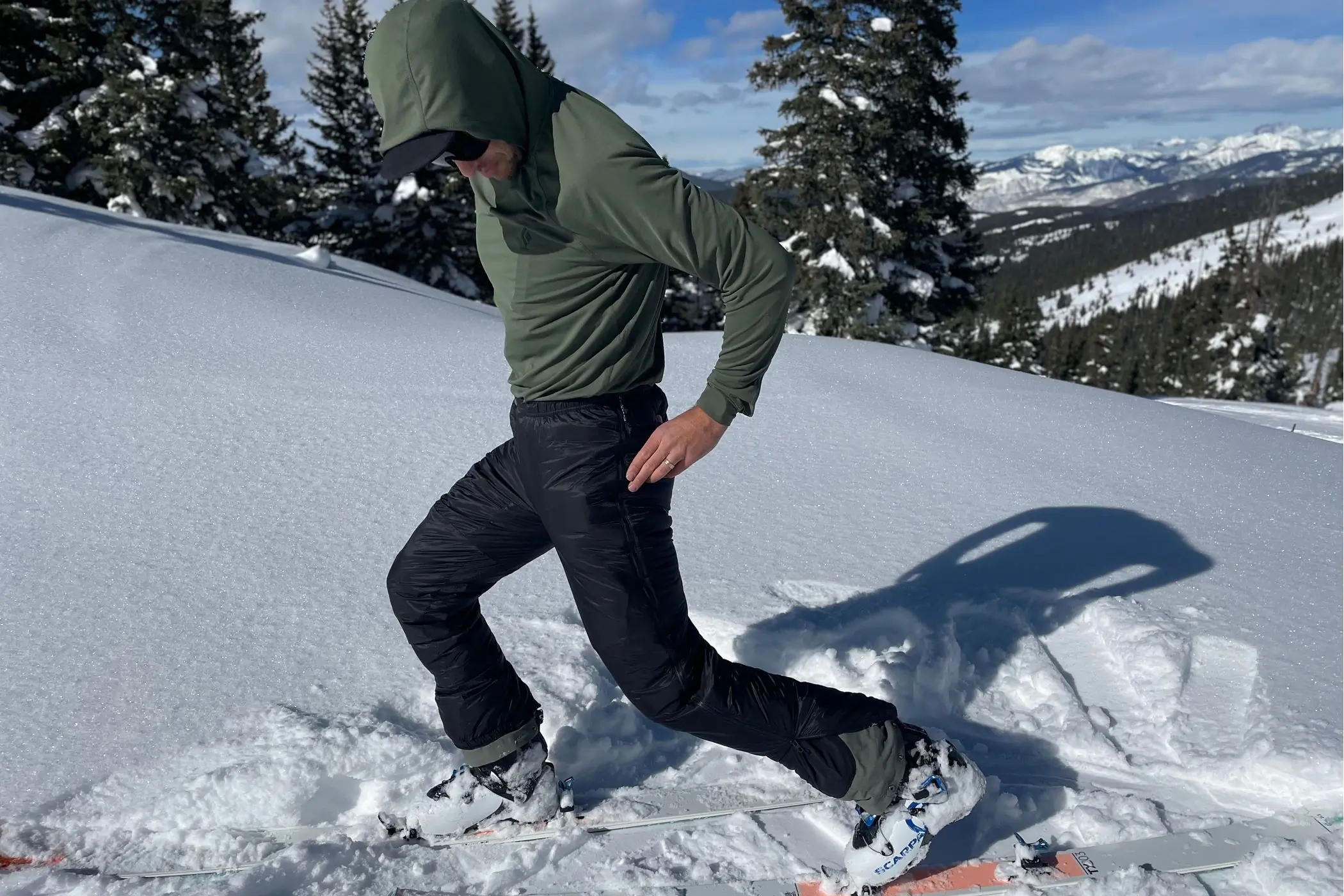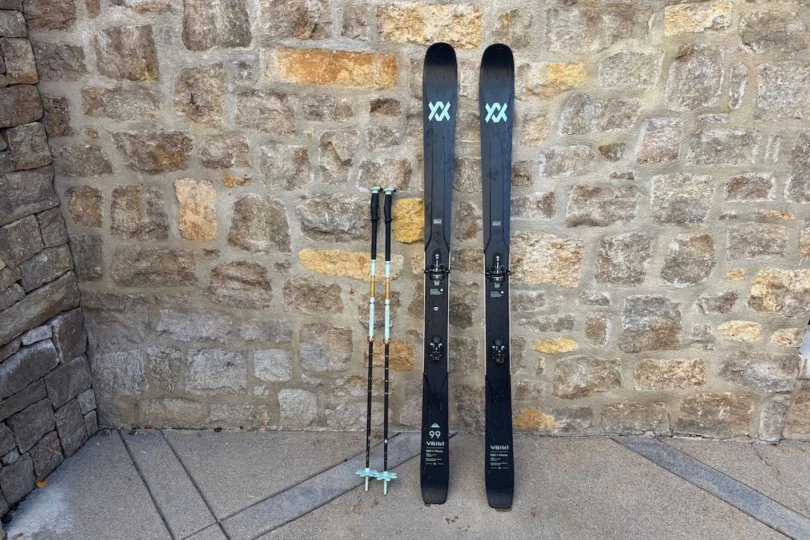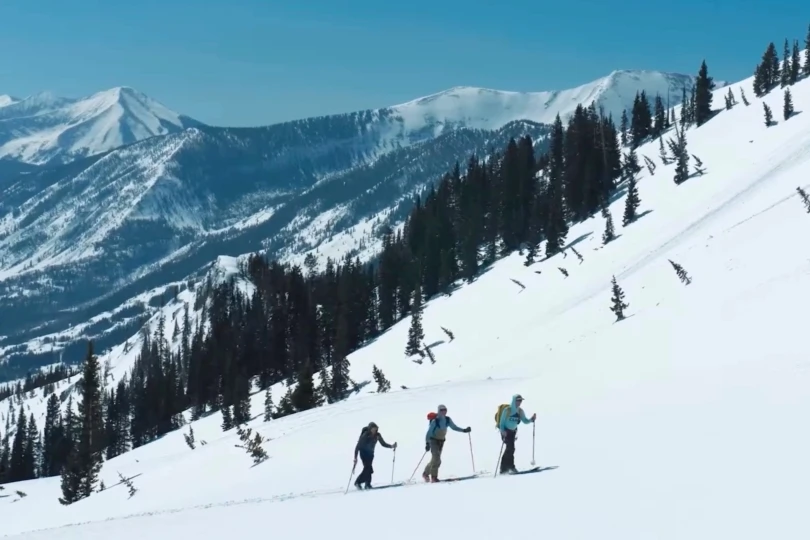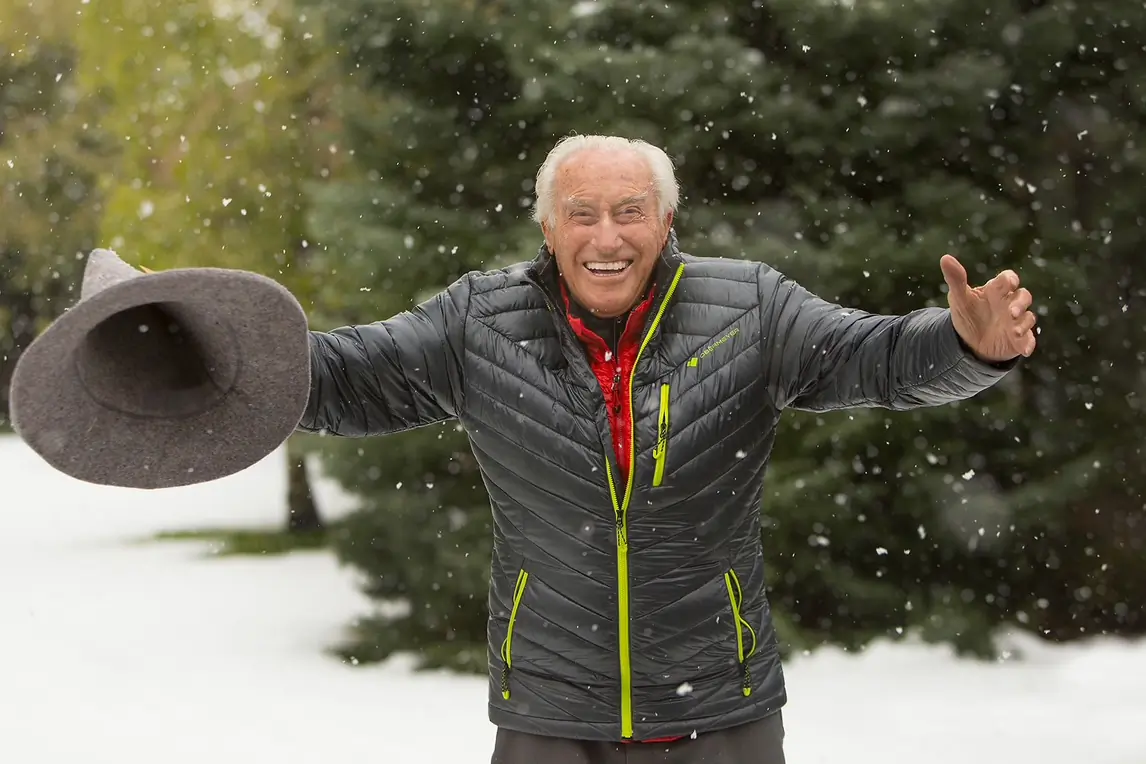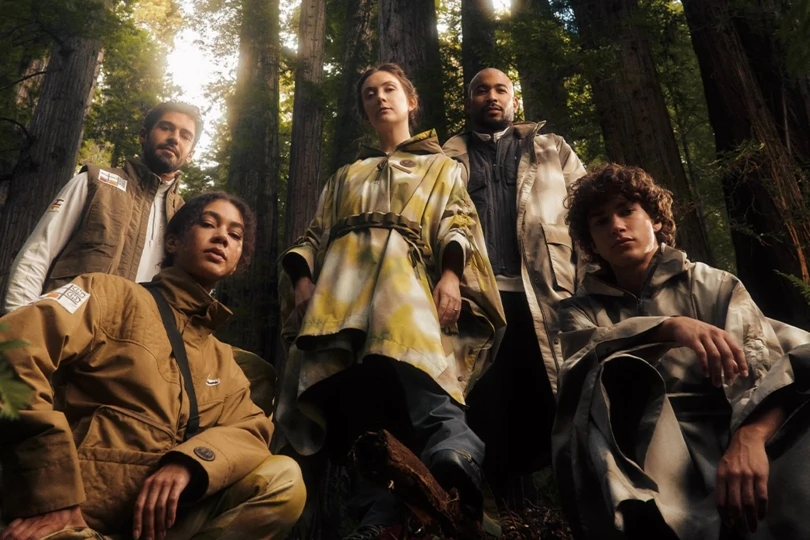Downhill ski shells have gotten really good in the last decade or so. With continuous refinement and fierce competition in the market, it’s tough to find significant differentiation between the good and the great.
So maybe it’s no surprise that Patagonia’s premium Storm Shift Jacket is as good as they come. Skiing inbounds frequently, through both frigid cold storms and sunny bluebird days, the Storm Shift Jacket has proven comfortable, protective, and yet not overly warm or clammy. And it does this while using mostly recycled materials throughout the jacket and no “forever chemicals.”
The Storm Shift Jacket is the brand’s “first nonfluorinated GORE-TEX ePe membrane and PFC-free DWR finish,” according to Patagonia. But it has the same waterproof, breathable, durable performance consumers expect from the brand.
In short: The Patagonia Storm Shift ($479) is a slightly insulated downhill ski jacket that uses 100% recycled polyester GORE-TEX fabric and PFC-free DWRs to minimize its environmental impact. In terms of performance, it’s extremely good and should hold up for years of hard use. If it has a downside, it’s that the jacket’s weight and bulk make it a mediocre choice for ski touring. This is an inbounds-facing coat.
- Fabric: Two-layer 100% recycled GORE-TEX fabric (PFC-free)
- Hood: Helmet-compatible
- Insulation: Body-mapped zigzag tricot-knit lining
- RECCO reflector: Yes
- Pit zips: Yes
Pros
- Durable
- Lightly insulated
- Full-featured
Cons
- Heavy and bulky for ski touring
Patagonia Storm Shift Jacket Review

Putting on the Storm Shift Jacket for the first time, I immediately noticed the tough, slick feel of the face fabric. While most shells feel hard on the exterior face, the Storm Shift is extremely slippery to the touch, and in a good way. It seems that nothing is going to stick to it. And it also feels really tough.
That proved to be a good sign. In testing the 100% recycled two-layer GORE-TEX jacket, I put it through realistic use. That meant carrying sharp skis over my shoulder for 20 minutes when walking to the base of Copper Mountain. It also meant running into tree branches while looking for some powder stashes on a stormy day at Vail. And after a dozen days on a few mountains, the jacket still looks brand-spanking new.
Durability with this one shouldn’t be a problem.
I’ll get into more specs below, but to keep it short, this jacket has everything you need and not much you don’t. But do note, as a shell, it’s warm. That’s because it has some insulation in the form of a zigzag tricot knit in the liner. If you plan to wear this on warm days as a rain jacket, you may want to reconsider. This is a ski jacket through and through.
Patagonia Storm Shift: What It Has, What It Doesn’t
The Storm Shift is a nicely featured jacket. It has zippered pockets at the stomach, chest, forearm, and interior. It also has a large interior drop-in pocket. It’s the perfect amount, enough to carry everything from lunch to water to a lift pass in the forearm.
Next, the hood is great. It’s easily large enough to fit a helmet, and hugs tightly when adjusted to allow for peripheral vision. It closes around the face well and the design protects your nose from the zipper.
The main zipper is an excellent YKK model that seems to be extremely water-resistant. It zips smoothly and easily. The Velcro cuff closures are small but secure. And the powder skirt (Patagonia calls it a “powder gasket”) snugs tightly and stays in place thanks to a silicone texture.
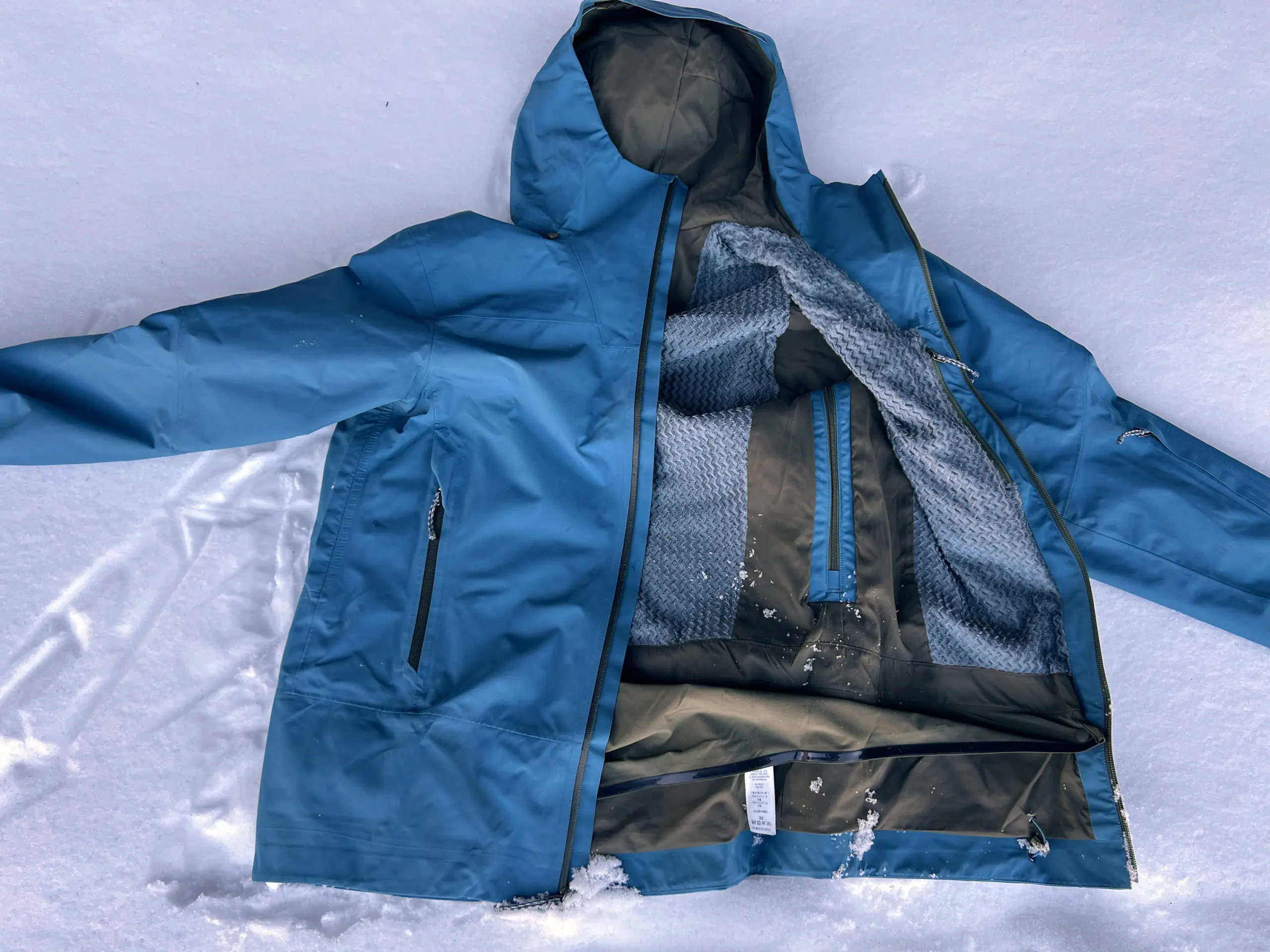



Finally, the inside of the coat has an insulating liner that adds a fair amount of warmth to the shell. I wouldn’t call this jacket a parka. And for cold weather, you want to layer with a puffy or fleece underneath. On very cold days (under about 10 degrees Fahrenheit) I wore the ARTILECT Divide Stretch Down Hoodie as an underlayer and stayed pleasantly warm.
Fit, Function, and Cons
So, where does the Storm Shift come up short? Well, I’d say its weight is a possible ding against it. At 817 g (28.82 ounces), this is a substantial jacket. If you want to buy one jacket and plan to do a lot of touring, this is probably not a good choice. Not only does it weigh quite a bit, but it’ll also take up a lot of space in a pack and will be too warm for spring uphill touring. It certainly would be fine as a side-country jacket, or on ski tours on cold winter days. But it’s definitely a downhill-oriented coat.
The Storm Shift has what I’d call an “American fit.” By that, I mean that it fits true to size by North American standards. I’m 5’8″ and 150 pounds. A medium fit me but is a little loose. I could probably downsize to a small and be well-served, but the medium is OK if slightly baggy.
Patagonia Storm Shift Jacket: Conclusion
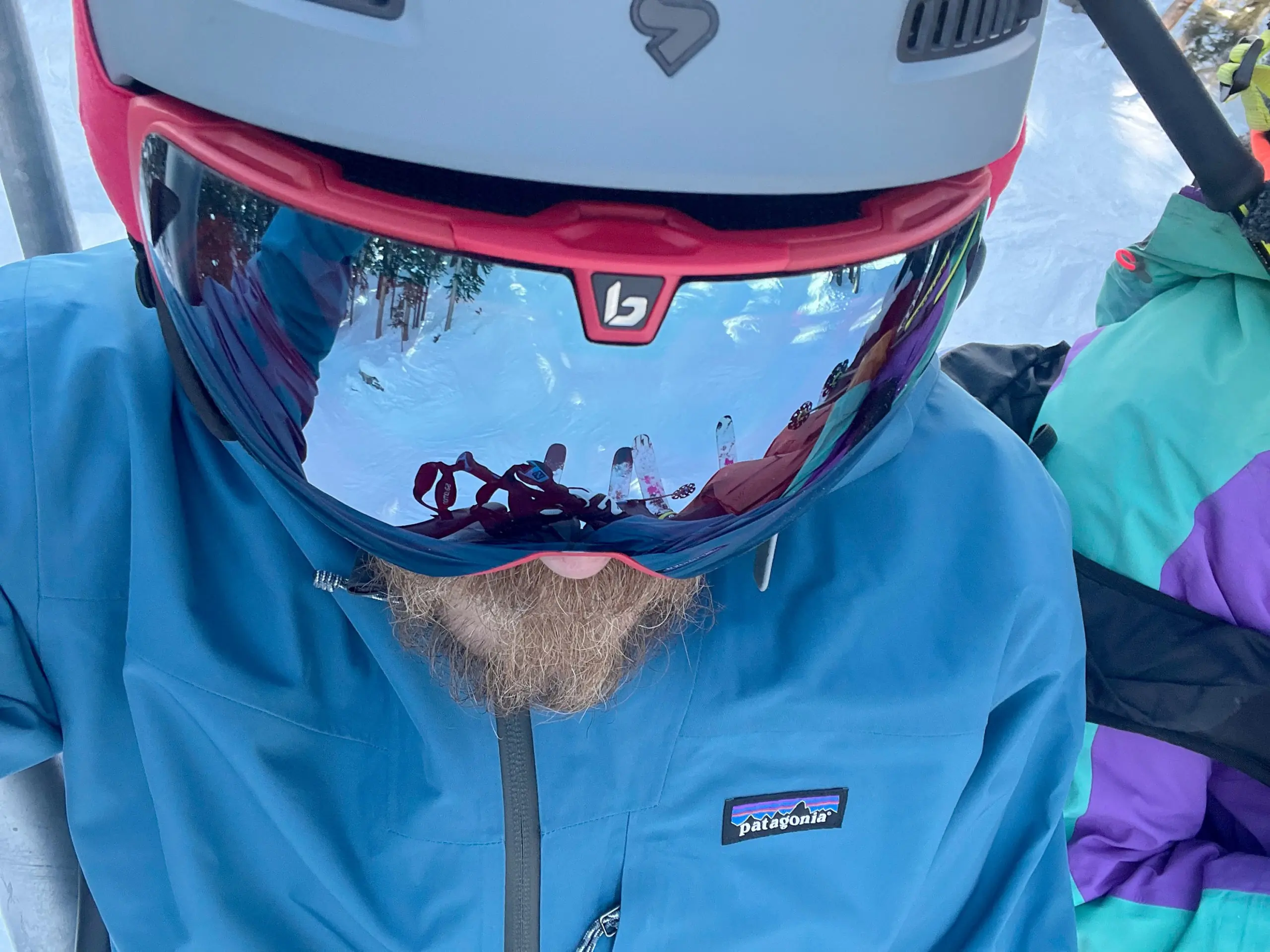



Who should consider the Patagonia Storm Shift? This is a great jacket for downhill skiers, period. The style is somewhat understated for sure. But if that’s your jam, the function of the Storm Shift is as good as any of the dozens of ski jackets I’ve tested over the years.
Patagonia’s level of refinement and attention to detail shines through in the Storm Shift. It’s a significant investment, but I expect the durability to be excellent and this jacket to last for many years of hard use.
